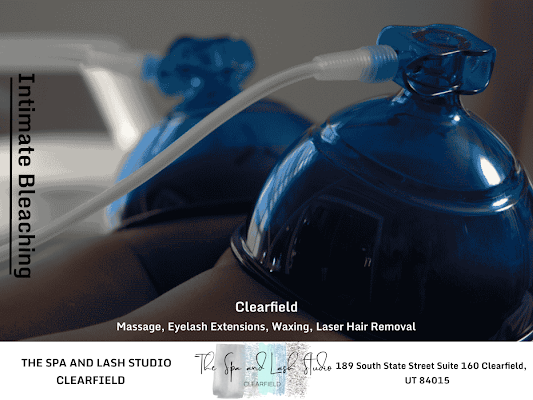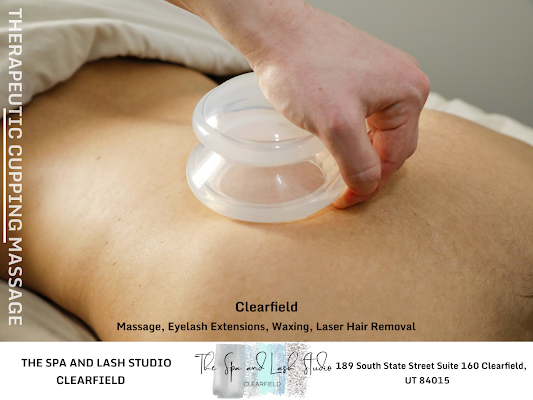Massage | How Cupping Works And Its Benefits For Your Health
Mar 13
Cupping therapy has gained popularity as a complementary and alternative therapy for various health concerns, including musculoskeletal pain, respiratory conditions, and skin disorders. This blog post will explore how cupping therapy works, its potential benefits for your health, and how to find a qualified cupping therapist to ensure safe and effective treatment. Whether looking for a natural way to manage pain, reduce stress, or improve your overall well-being, cupping therapy may be a valuable addition to your self-care routine.
WHAT IS MASSAGE CUPPING?
Massage cupping is a therapeutic technique that involves using small, specially designed cups on the skin to create suction. The cups are typically made of glass, plastic, or silicone and can come in various sizes and shapes to fit different areas of the body.
During a massage cupping session, the cups are placed on the skin, and a vacuum is created within the cup using heat or a hand pump. The suction effect pulls the skin and underlying tissues into the cup, promoting increased blood flow, lymphatic drainage, and relaxation of muscles and fascia.
Massage cupping can be used on various body parts, including the back, neck, shoulders, legs, and arms. The amount of suction used during a session can vary depending on the individual's needs and comfort level. Some people may experience mild discomfort or bruising during or after the treatment, but this is generally temporary and should subside within a few days.
Cupping therapy has been used for centuries in traditional Chinese medicine and other holistic healing practices. It is believed to help balance the body's energy and promote healing by stimulating the flow of Qi, or vital energy, through the body's meridians.
During a massage cupping session, the cups are placed on the skin, and a vacuum is created within the cup using heat or a hand pump. The suction effect pulls the skin and underlying tissues into the cup, promoting increased blood flow, lymphatic drainage, and relaxation of muscles and fascia.
Massage cupping can be used on various body parts, including the back, neck, shoulders, legs, and arms. The amount of suction used during a session can vary depending on the individual's needs and comfort level. Some people may experience mild discomfort or bruising during or after the treatment, but this is generally temporary and should subside within a few days.
Cupping therapy has been used for centuries in traditional Chinese medicine and other holistic healing practices. It is believed to help balance the body's energy and promote healing by stimulating the flow of Qi, or vital energy, through the body's meridians.
TYPES OF MASSAGE CUPPING
There are several types of massage cupping techniques, each with specific benefits and applications. The most common types of massage cupping include:
- Traditional cupping: This involves using glass cups that are heated with fire before being placed on the skin. As the cups cool, they create a vacuum that pulls the skin and underlying tissue into the cup. Traditional cupping is typically used for general relaxation, pain relief, and detoxification.
- Silicone cupping: Silicone cups are flexible and can be squeezed to create suction. This type of cupping is often used for more specific applications, such as treating trigger points or knots in the muscles.
- Vacuum cupping: Vacuum cupping uses a machine to create suction rather than heating the cups. This technique can be used for deep tissue massage and is often used in sports and physical therapy.
- Wet cupping: This technique involves making small incisions in the skin before applying the cups. As the suction is applied, blood is drawn out, which is believed to help remove toxins from the body.
- Facial cupping: Facial cupping uses small, specially designed cups on the face and neck to stimulate blood flow, reduce puffiness, and improve skin tone and texture.
- Moving cupping: This involves moving the cups along the muscles rather than leaving them in one place. This technique can be used to release tension in the muscles and improve the range of motion.
WHAT ARE THE BENEFITS OF MASSAGE CUPPING?
Massage cupping has several potential benefits for the body and mind, including:
- Pain relief: Cupping can help to release tension in the muscles and reduce inflammation, which can provide relief from chronic pain conditions such as fibromyalgia, arthritis, and back pain.
- Improved circulation: The suction created by cupping can help increase blood flow to the treated area, promoting healing and reducing muscle soreness.
- Relaxation and stress reduction: Cupping can help stimulate the parasympathetic nervous system, which can induce deep relaxation and reduce stress and anxiety.
- Detoxification: Cupping can help stimulate the lymphatic system, which removes toxins from the body.
- Improved digestion: Cupping can help to stimulate the digestive system and promote healthy bowel movements.
- Improved skin health: Facial cupping can help to improve skin tone and texture, reduce the appearance of fine lines and wrinkles, and promote lymphatic drainage.
- Enhanced athletic performance: Cupping can help to improve the range of motion, reduce muscle soreness, and increase blood flow to the muscles, which can improve athletic performance and reduce the risk of injury.
- Reduced cellulite: Cupping can help to improve circulation and reduce the appearance of cellulite on the skin.
CUPPING FOR SPECIFIC CONDITIONS
Cupping therapy can be used to address a wide range of health conditions, including:
- Musculoskeletal pain: Cupping therapy can help to alleviate pain and stiffness in the muscles and joints. It is often used to treat back pain, neck pain, and osteoarthritis.
- Respiratory conditions: Cupping therapy can treat respiratory conditions such as asthma, bronchitis, and common colds. Cupping therapy may help to clear congestion, reduce inflammation, and improve breathing.
- Digestive disorders: Cupping therapy can help to improve digestion and alleviate symptoms of digestive disorders such as irritable bowel syndrome (IBS), constipation, and diarrhea. Cupping therapy may help to stimulate the digestive system and promote healthy bowel movements.
- Headaches and migraines: Cupping therapy can help to reduce the frequency and severity of headaches and migraines. It helps alleviate muscle tension and improve blood flow to the head.
- Anxiety and depression: Cupping therapy can help to reduce symptoms of anxiety and depression. Cupping therapy may help to promote relaxation, reduce stress, and improve mood.
- Sports injuries: Cupping therapy can treat sports injuries such as strains, sprains, and bruises. Cupping therapy may reduce inflammation, improve circulation, and promote healing.
- Skin conditions: Cupping therapy can treat acne, eczema, and psoriasis. Cupping therapy may help improve blood flow and lymphatic drainage, promoting healing and reducing inflammation.
FINDING A QUALIFIED MASSAGE CUPPING THERAPIST
If you want to try massage cupping therapy, finding a qualified therapist who can provide safe and effective treatment is important. Here are some tips for finding a qualified massage cupping therapist:
- Look for massage therapists who have received specialized training in cupping therapy from a reputable school or organization. They should also have a valid massage therapy license in your state or province.
- Ask friends, family members, or healthcare professionals for recommendations. They can refer you to a qualified therapist in your area.
- Look for reviews and testimonials online to get a sense of what others' experiences have been like with a particular therapist.
- Ask the therapist about their experience with cupping therapy and how many years they have been practicing. A therapist with more experience may be more skilled in identifying and treating specific conditions.
- Be sure to discuss your health history with the therapist before starting treatment. They should be able to assess whether cupping therapy is appropriate for your condition and any potential risks or side effects.
- Ensure the therapist uses clean and sterilized cups and their workspace is clean and tidy.
- Trust your gut when choosing a therapist. If something feels off or uncomfortable, it may be best to find someone else.
CONCLUSION
While cupping therapy may not be suitable for everyone, it can be a valuable addition to a comprehensive treatment plan for many people. If you are interested in trying cupping therapy, be sure to work with a qualified therapist who can provide safe and effective treatment. With its long history and potential benefits, cupping therapy is an exciting option for anyone looking to improve their health and well-being.
The Spa and Lash Clearfield are dedicated to providing the highest quality massage, eyelash, and facials treatments in Clearfield, UT. Contact them today for more information!
The Spa and Lash Clearfield are dedicated to providing the highest quality massage, eyelash, and facials treatments in Clearfield, UT. Contact them today for more information!


